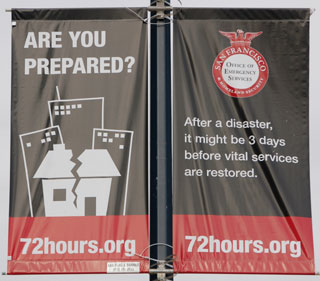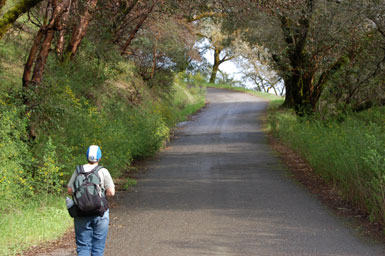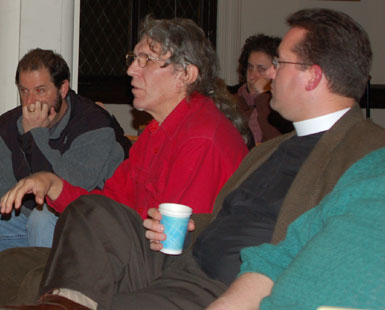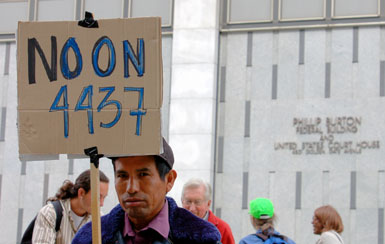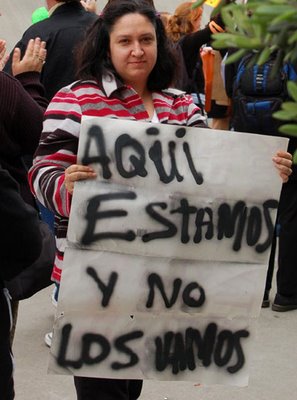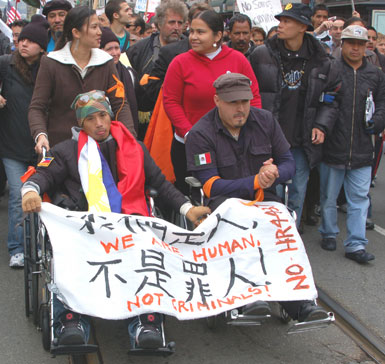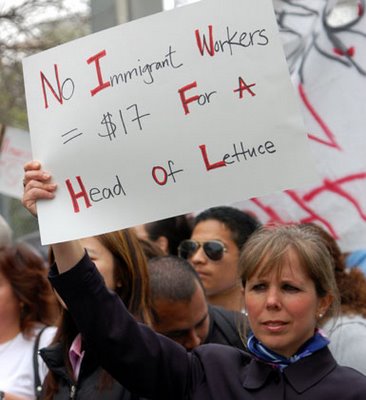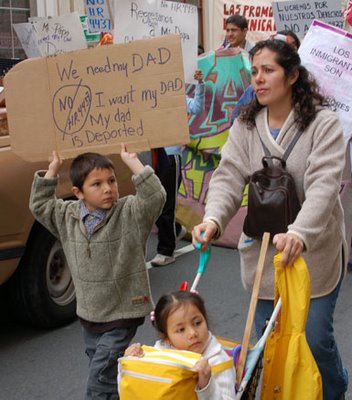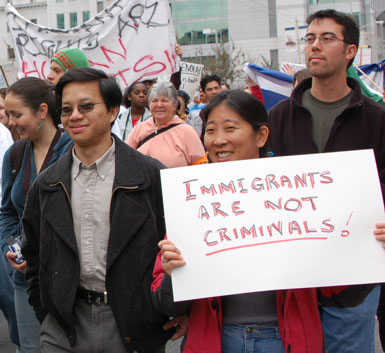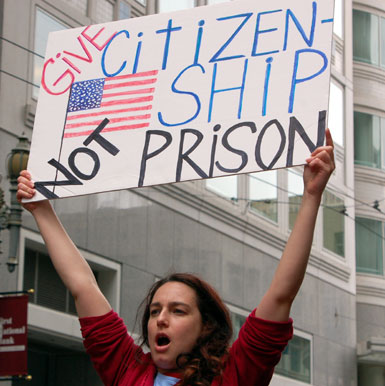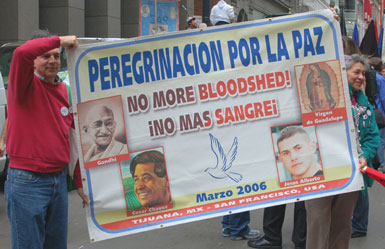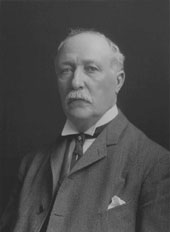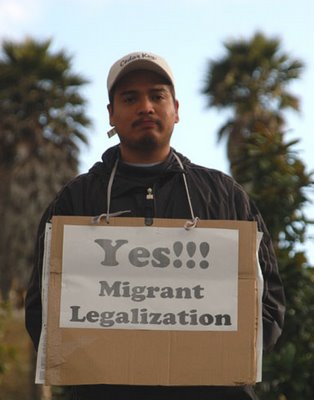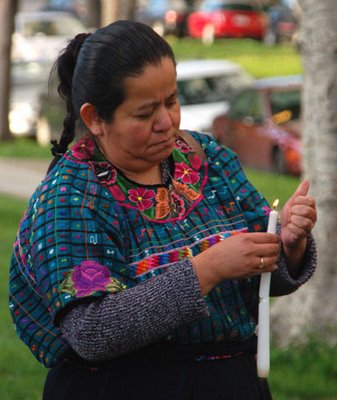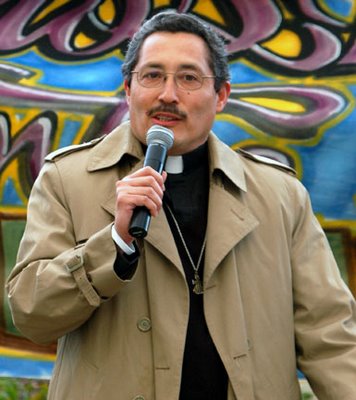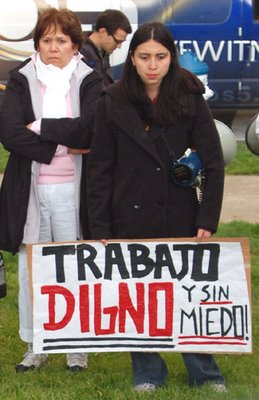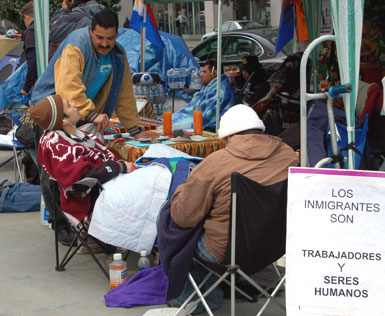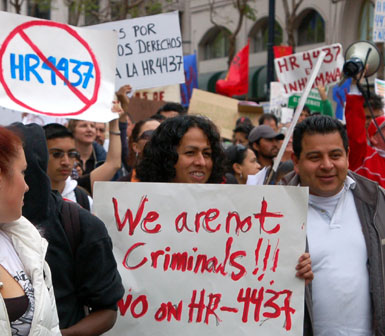
Many of us who lean to the progressive side of things are enjoying the spectacle of national Republicans killing off their future prospects among Latino voters. They let their outright racists, like Colorado Congressman Tom Tancredo, set the party's legislative agenda. Tancredo and his buddy James Sensenbrunner of Wisconsin want to make our undocumented working class into felons. That's going to alienate even Latinos who think immigrants should play by the book.
What nobody seems to get is that most undocumented people are uncles or cousins or even wives of someone with legal status. Not to mention that their children are U.S. citizens. Where the exclusionists see Mexican invaders, Latinos see their families. Guess who wins that one -- and how they will vote when they are eligible?
So how does this play in California where we've been living inside these issues for years? In 1994, Pete Wilson played with this fire, won the re-election battle by pushing for the anti-immigrant Prop. 187, and the Republicans have been losing the war ever since as Latinos jumped firmly into the Democratic camp.
The frightening reality is that if Prop. 187 were offered to California voters today, it would probably pass again, though perhaps with less than 60 percent of the vote. Anti-immigrant measures reflect white fear that their country and culture is being engulfed by newcomers who speak foreign languages and have different lifestyles. But although California has passed the demographic tipping point at which white people ceased to be the majority (no ethnic groups has a majority these days), the electorate remains about 75 percent white. Most voters are older, better off, and more educated than non-voters; these are the characteristics of the white California population. Also many immigrants have not yet jumped the hurdles on the way to citizenship. So the Anglo vote remains dominant.
Anti-immigrant ballot measures remain a cheap way for Anglo California to say: "My state is changing and I'm scared." Fortunately we are not facing any current restrictionist ballot measures. But we probably will again, and for the time being, they may very well pass.
Meanwhile, this year, California politicians have simply tried to make immigration go away as a topic of political dialogue. Once singed, few want to go back to the racial animosity of the mid-1990s.
Gov. Arnold
says "I'll let the geniuses in Washington figure all that out." His Republican base certainly wants more: in 2003 he let them know that he voted for Prop. 187; last year
he flirted briefly with supporting the Minutemen vigilantes, then backed off. He has a quandary because anti-immigrant policies not only turn off Latinos, but also independent women of all races, another large electoral bloc with whom he has some problems.
Some California Republicans are less careful. State Sen. Tom McClintock, who is running for lieutenant governor,
accused President George W. Bush of failing to protect U.S. borders and said illegal aliens should be deported. "There's nothing radical about that," said McClintock, R-Thousand Oaks."
And the Minuteman founder Jim Gilchrist, running as a Conservative for congress in the San Diego suburbs, has been
fanning the flames. "I don't want to sound paranoid, but when you see hundreds of thousands of people rallying around a foreign flag ... it's the next thing to foreign insurrection," he said.
On the other hand, he says, Congress could spur an insurrection from the anti-illegal immigration side if it approves a plan that would legitimize those now in the country illegally. ..."I'm not going to promote insurrection, but if it happens, it will be on the conscience of the members of Congress who are doing this," he said. "I will not promote violence in resolving this, but I will not stop others who might pursue that."
Meanwhile, the Democrats dueling for the opportunity to take on Arnold have been ducking to the best of their ability. Phil Angelides points out that he opposed Prop. 187. As someone involved in that campaign, I can testify that Democratic politicians who showed any spine in that fight were few and far between. I don't remember his name, but that doesn't say anything -- he was not prominent in my circles. His website doesn't seem to mention the immigration at all, at least that I could find. No search function.
Aspiring Governor Steve Westly (website) has a section where visitors can give their opinions on immigration. His spokesman recently explained that Westly opposes HR 4437: "It criminalizes undocumented workers in this country, which isn't good for public safety, the budget or the problem of illegal immigration at all."
Definitely advantage to Westly on immigration, simply by being prepared to address what folks are wondering about.
Oakland progressive policy advocate Frank Russo goes after Gov. Arnold about the many anti-immigrant measures introduced by Republican legislators -- and suggests some measures he should support: drivers licenses for the undocumented so we can be sure they have insurance; in-state tuition in community colleges for undocumented young people who have graduated from California high schools; and development of a California Office of Immigrant Affairs. Democrats would be smart to come clean on these issues as well.
In 1994, older relatives of the current crop of Latino high school students took to the streets, much as we have been seeing over the last few days. California has begun to calm down over immigration -- anyone who thinks the state is upset by recent walkouts and marches never knew or has forgotten how heated the atmosphere was 12 years ago. California is working out how to be one of the most diverse societies the world has ever seen. Eventually the pols will catch up with the people.









